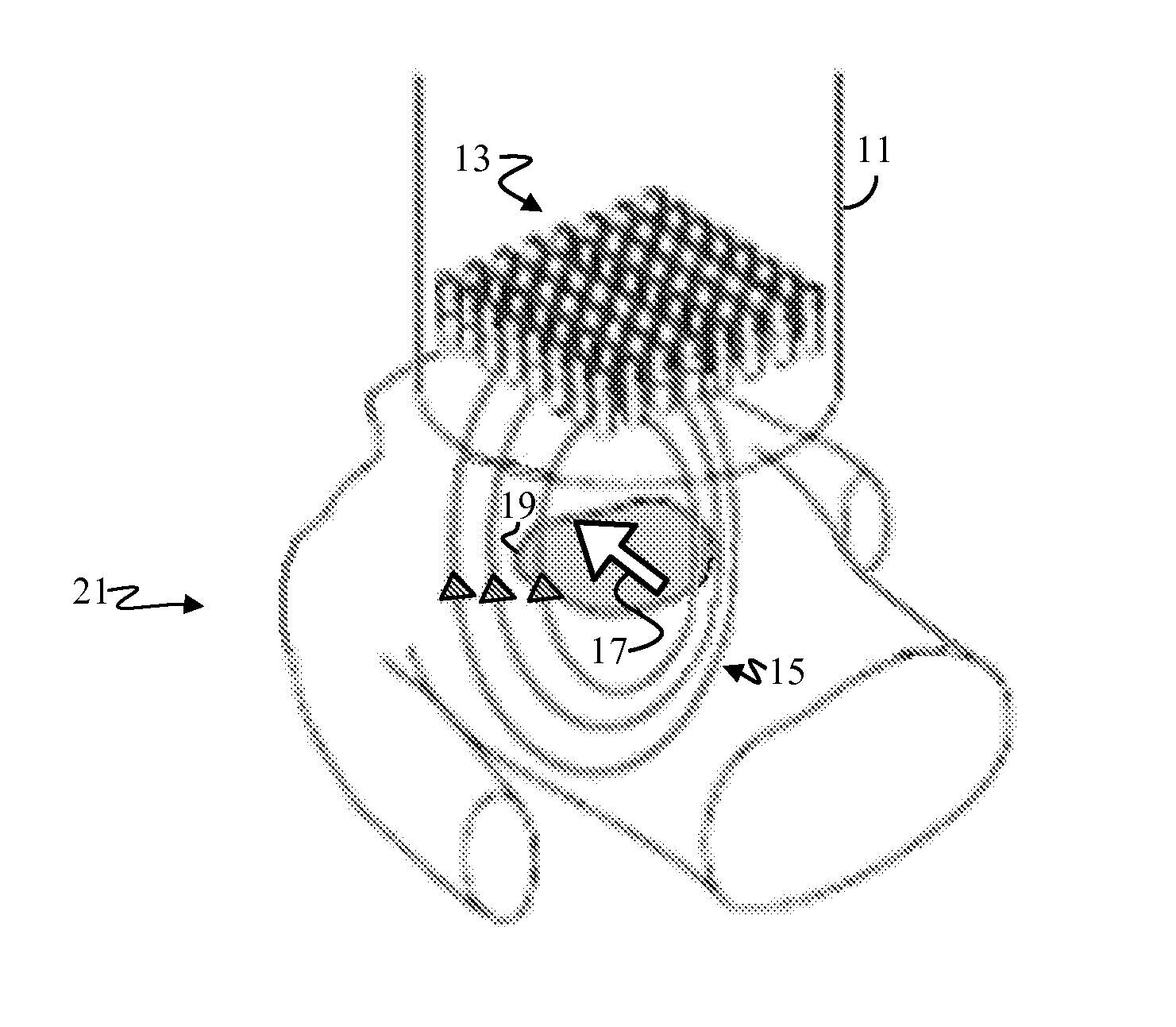Denoise MCG Measurements
a magnetic resonance imaging and denoising technology, applied in the field of magnetic resonance imaging, can solve the problems of not being able to localize abnormal electrical impulse currents in the heart directly, unable to achieve the accuracy of bspm electric current localization, and unable to become a mainstream medical diagnostic tool in cardiology. achieve the effect of improving de-noise capabilities
- Summary
- Abstract
- Description
- Claims
- Application Information
AI Technical Summary
Benefits of technology
Problems solved by technology
Method used
Image
Examples
Embodiment Construction
[0067]Magnetic fields generated by a human heart are very weak. Typically, such magnetic fields are in the order of 10−12 to 10−10 Tesla. The size of these field means that they are inherently vulnerable to electromagnetic noise. Obtaining good measurements therefore means using highly sensitive equipment, but such sensitivity are likewise susceptible to noise.
[0068]Therefore, even the best MCG measurements are liable to be noisy. In fact, raw MCG measurements may be too noisy for direct use. Consequently, de-noise methods (i.e. methods for removing noise from a raw MCG map) are typically part of required pre-processing step in the generation of a 2D MCG image.
[0069]Different approaches address different types of noise. For example, environmental noise may be reduced by use of a shielded room and gradiometer. System noise may be reduced by careful calibration of equipment. Direct measurement noise in raw data is typically addressed by signal processing methods.
[0070]Current signal p...
PUM
 Login to View More
Login to View More Abstract
Description
Claims
Application Information
 Login to View More
Login to View More - R&D
- Intellectual Property
- Life Sciences
- Materials
- Tech Scout
- Unparalleled Data Quality
- Higher Quality Content
- 60% Fewer Hallucinations
Browse by: Latest US Patents, China's latest patents, Technical Efficacy Thesaurus, Application Domain, Technology Topic, Popular Technical Reports.
© 2025 PatSnap. All rights reserved.Legal|Privacy policy|Modern Slavery Act Transparency Statement|Sitemap|About US| Contact US: help@patsnap.com



